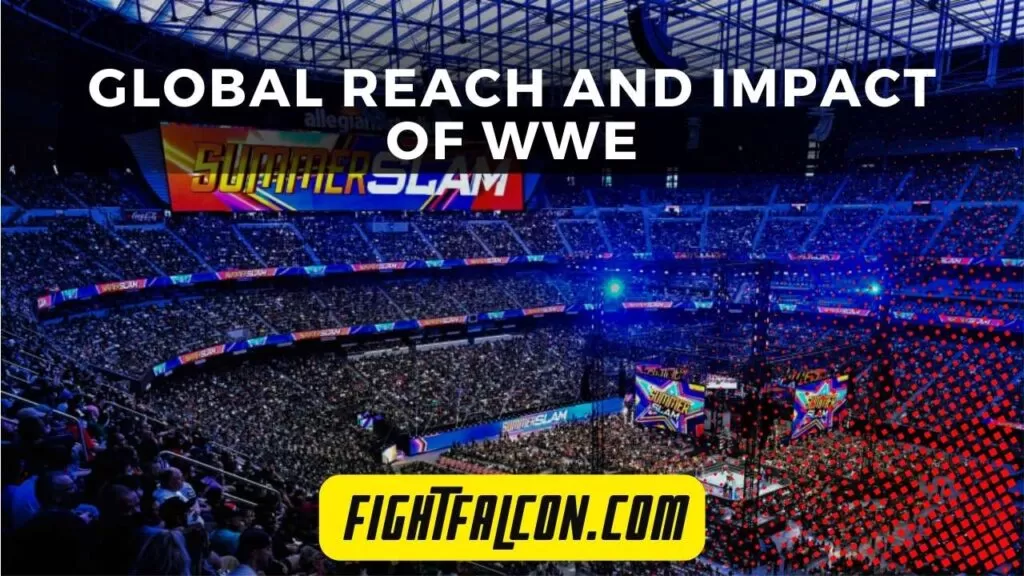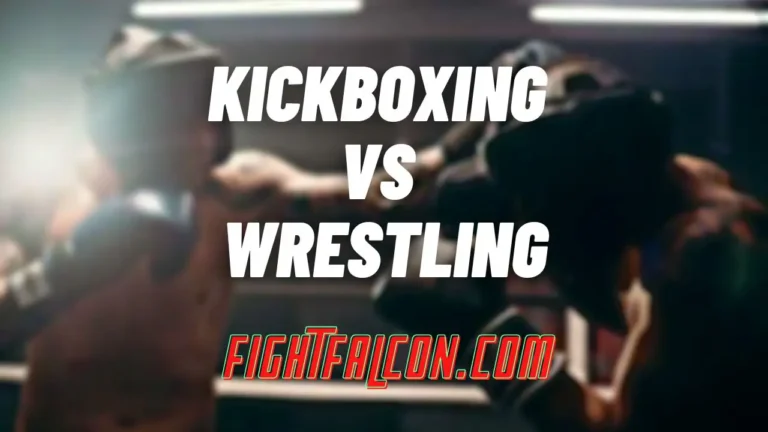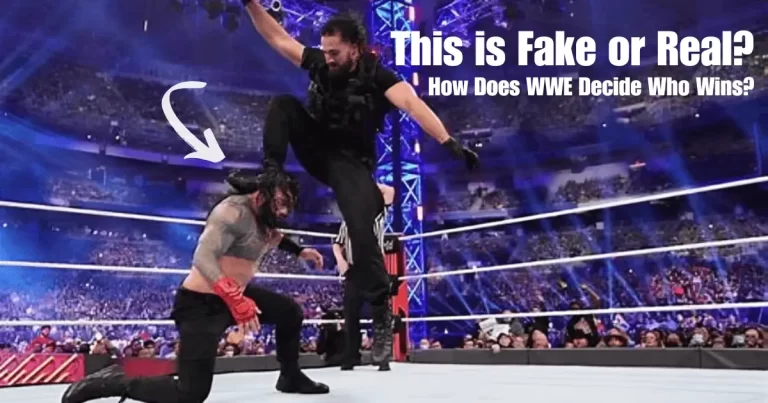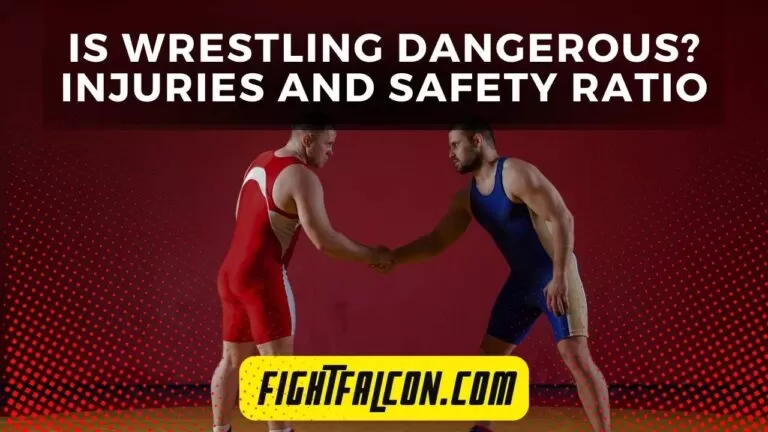How Does WWE Work? History, Basics, Rules, and Advancement
Professional wrestling has won the hearts of millions worldwide for decades. WWE (World Wrestling Entertainment), which has earned popularity globally over the years since its inception, is one of the most prominent organizations in the world of professional wrestling.
Professional wrestling, or WWE, is a unique combination of athleticism, choreography, and storytelling. Wrestling, at its foundation, consists of choreographed matches with preset outcomes. On the other hand, the physical demands on the wrestlers are quite substantial.
Further in this article, you will learn more about WWE and its evolution. So, stay tuned until the very end to catch every single detail.
History Of Wrestling

1. Early Origins
Professional wrestling can be traced back to 19th-century carnivals and touring acts. Over time, what began as a technique to entertain and amuse spectators became a respectable competition.
Wrestling promoters began to emphasize the theatrical aspects of the sport, developing storylines and rivalries to boost the entertainment value.
2. Expansion And Television
Professional wrestling made its way onto television screens in the 20th century, and the advent of cable television considerably broadened its reach.
WWF (World Wrestling Foundation), now known as WWE, was instrumental in its growth. Wrestling had a golden era in the 1980s, with superstars like Hulk Hogan and “Stone Cold” Steve Austin enthralling spectators.
Basics Of Wrestling
1. Athleticism
Wrestling is a unique combination of athleticism, choreography, and storytelling. Wrestling, at its foundation, consists of choreographed matches with preset outcomes.
On the other hand, the physical demands on the wrestlers are quite substantial. The ability of a wrestler to execute high-impact maneuvers, flips, and slams necessitates a combination of strength, quickness, and conditioning.
2. Character Development
The emphasis on character development is one of the primary things that distinguishes WWE.
Each wrestler adopts a separate identity, known as a “gimmick.” This character becomes the wrestler’s persona, directing their actions, promos, and interactions in and out of the ring.
Building interesting plots and rivalries that keep the audience committed requires the development of engaging characters.
Rules Of Pro Wrestling

1. Winning Conditions
While WWE has scripted matches, some restrictions are in place to create a sense of competition and add tension.
A bout can be won by either pinning an opponent’s shoulders to the mat for three counts or forcing them to surrender to a hold.
Wrestlers use submission holds to inflict pain or pressure on their opponents’ joints or muscles, forcing them to tap out.
2. Count-Out And Disqualifications
Other match-ending conditions include count-outs (when a wrestler does not return to the ring in time) and disqualifications (when wrestlers participate in prohibited activities).
These activities can range from utilizing foreign objects to striking the referee and are all grounds for disqualification.
3. Special Stipulations
Certain fights, such as No Holds Barred or Hardcore matches, have unique stipulations in which the standard rules are modified, and wrestlers can use weapons and fight outside the ring. These matches frequently heighten the drama and brutality.
Training Development
1. Rigorous Training Process
It is easy to become a WWE superstar. Wrestlers undergo extensive training to achieve the essential skills, physical fitness, and character.
WWE has training facilities, such as the Performance Center, where prospective wrestlers are prepared for the main roster.
2. Crafting The Persona
Aspiring wrestlers learn how to create an engaging presence that captivates the audience. This includes more than wrestling abilities, character development, mic skills, and the ability to elicit emotional responses from the audience.
Global Reach And Impact Of WWE

1. Entertainment
WWE’s effect is felt far beyond the confines of the ring. The group, which has a global fan base, has produced movies, documentaries, and reality TV shows starring its superstars.
Iconic wrestlers like Dwayne “The Rock” Johnson have gone on to have great careers in Hollywood, showcasing WWE’s talent’s crossover appeal.
2. Community Engagement
WWE’s philanthropic dedication has resulted in several charitable activities, showcasing the beneficial impact it can have on communities worldwide.
Wrestlers use their position to make a difference by participating in community outreach projects and charitable activities.
3. International Reach
The popularity of WWE has no bounds. WWE has become a global phenomenon, with broadcasts in numerous languages and overseas tours. It has presented the world to wrestlers from other countries, generating a sense of inclusivity and connection among fans worldwide.
4. Cultural Exchange
The international presence of WWE has resulted in unique cultural exchanges.
Wrestlers from other countries contribute their styles and traditions to the ring, adding to the sport’s diversity. This exchange of cultures encourages understanding and admiration among fans from all origins.
Technological Innovations In WWE
1. Digital Transformation
WWE has embraced technology improvements to engage fans on multiple digital channels.
Fans are now closer to the action because of social media, streaming services, and interactive apps.
Live tweets, virtual experiences, and behind-the-scenes videos enrich the fan experience and strengthen their bond with celebrities.
2. Streaming
The WWE Network, a subscription-based streaming service, changed how fans consume content. It has many previous matches, documentaries, and special programs.
With the network’s debut, WWE demonstrated its forward-thinking commitment to satisfy changing entertainment preferences.
Future Of WWE
WWE’s future has boundless possibilities. The organization adjusts as the world changes. Ongoing technological breakthroughs, cultural sensitivities, and the evolution of entertainment preferences will shape WWE’s trajectory.
1. Legacy And Continuity
WWE’s ability to appeal to people of all ages demonstrates its ageless appeal. Grandparents, parents, and children frequently bond over shared wrestling memories, proving the sport’s enduring influence.
2. Diverse Representation
WWE has made progress in embracing diversity, but the trip is far from over.
The representation of people from various ethnic or cultural backgrounds is likely to expand as the wrestling landscape becomes more inclusive.
3. Global Partnerships
WWE’s collaborations with other entertainment brands, sports groups, and worldwide corporations continue to broaden the company’s reach.
Collaborations and cross-promotions allow you to reach new audiences and generate new revenue streams.
Frequently Asked Questions (FAQs)
What is the history of professional wrestling, and how did it evolve into WWE?
Professional wrestling originated in 19th-century carnival events, evolving from amusement to actual competition. The World Wrestling Federation (WWF), now known as WWE, was instrumental in increasing the popularity of professional wrestling on television in the twentieth century.
How does WWE incorporate storytelling into its matches and events?
Storytelling is a key component of WWE’s popularity. Wrestlers adopt distinct personalities or “gimmicks” that drive their behavior and relationships inside and outside the ring. Scripted promotions and interviews expand on these characters’ backstories, creating rivalries and emotional relationships with the viewer.
How does WWE ensure the safety of its wrestlers and address concerns about scripted violence?
WWE places a high priority on wrestler safety and welfare. To guarantee the health of its performers, the company has implemented wellness initiatives that include drug testing and medical exams. In addition, WWE changes storylines and match stipulations to reflect shifting societal values.
Conclusion
WWE remains a timeless spectacle in the ever-changing entertainment landscape, blending athleticism, storytelling, and showmanship perfectly.
WWE has enthralled generations with its larger-than-life characters, spectacular matches, and convoluted storylines from its humble beginnings in carnivals to its current prominence as a worldwide behemoth.
WWE stays committed to its mission of entertaining and connecting with viewers as the world evolves and technology develops.
WWE’s power is found in its planned successes and disappointments and in the emotional connection it inspires.
WWE is a cultural landmark that crosses boundaries and decades, thanks to the cheers, jeers, and shared moments of enthusiasm. If you still have questions about WWE, do not hesitate to reach out.






